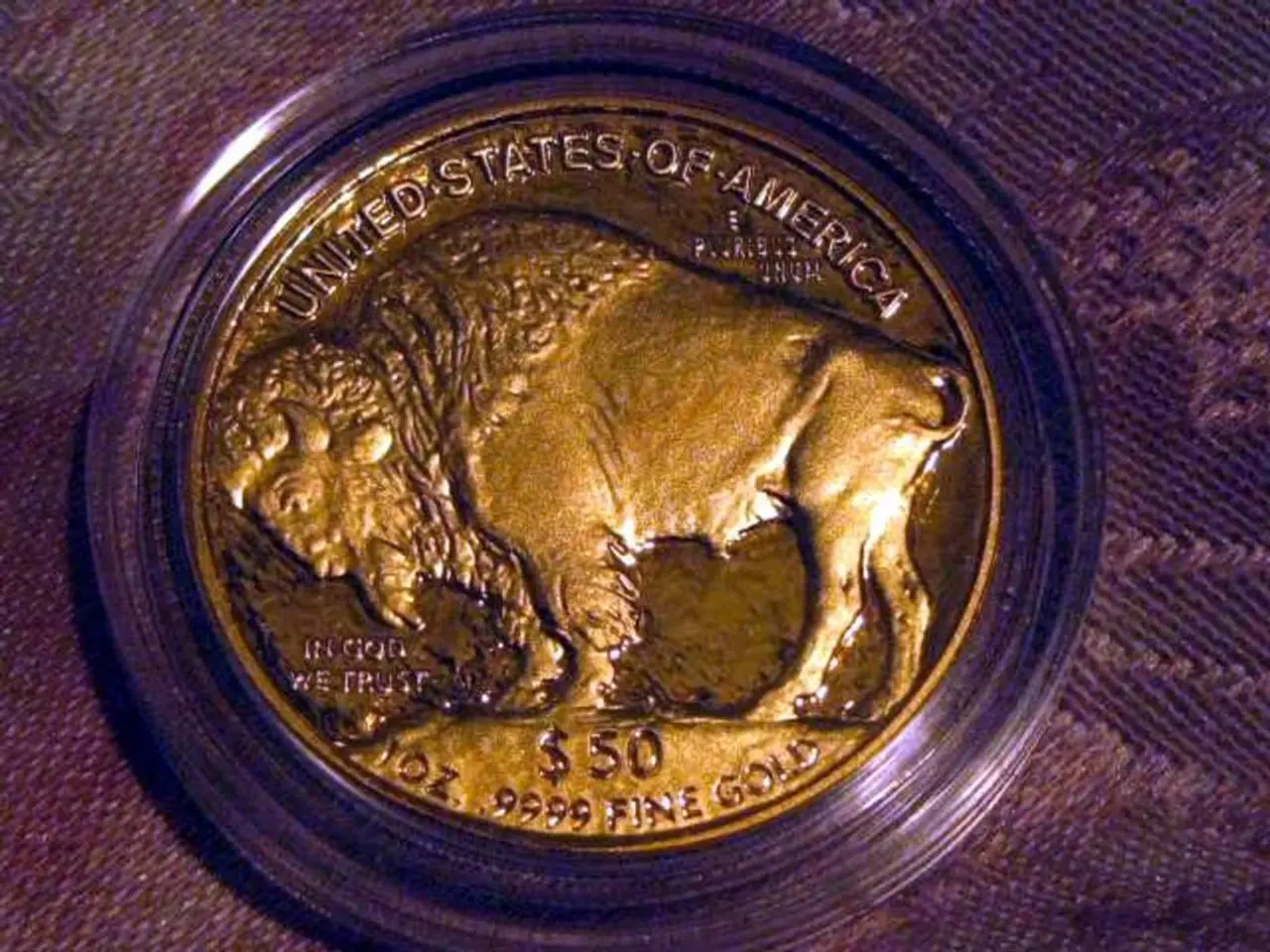Digital authorities largely deny acceptance of virtual currencies
In a discussion led by Max Castelli and Yara Aziz, experts from UBS Asset Management and OMFIF, respectively, explored the potential decline of the US dollar's dominance in the global economy. This decline is driven by a combination of factors, including monetary policy shifts, political uncertainty, structural economic imbalances, and rising alternatives to the dollar.
The loosening of US monetary policy, as seen since mid-2024, has reduced returns on dollar assets and weakened the currency. Political and geopolitical uncertainty, notably from unstable trade policies and geopolitical positions, have diminished investor confidence in US assets. The persistent large US current account deficits require significant foreign capital inflows, creating vulnerability if investors lose appetite for dollars.
US trade policy at times favors a weaker dollar to boost exports and reduce trade imbalances, contributing to depreciation pressure. Investor positioning and hedging activity have amplified selling pressure on the dollar, with extreme prior foreign holdings of US assets combined with increased hedging against dollar risk.
The erosion of US global standing and governance concerns, due to increased polarization and perceptions of reduced stability, undermine the dollar’s safe-haven status. The rise of credible alternative currencies, particularly in China, enhances the appeal of alternatives to the dollar for global trade and reserves.
These factors create both cyclical and structural challenges to the dollar’s supremacy, leading to its depreciation against major currencies and raising questions about its long-term role as the dominant global currency.
Jesper Koll, global ambassador and expert director at Monex Group, Japan, suggests that as de-dollarisation accelerates, Japan has an opportunity to gain more prominence. European safe assets are gaining focus as an alternative to the dollar.
The role of gold is changing, according to Michael Paulus, head of public sector banking, Asia, Alberto Torres, head of public sector banking, LATAM, Sunil Kaushik, head of precious metals solutions, APAC, Natalie Tsui and Tobias Cheung, public sector banking, Asia at Citi.
Christopher Smart, managing partner of Arbroath Group, argues that liberal democracies and regulators need to address the challenges posed by cryptocurrencies to the traditional financial system and the dollar. Nat Benjamin, executive director of financial stability strategy and risk at the Bank of England, outlines key considerations to foster a steady-state liquidity environment that supports stability and growth.
Harold James, Claude and Lore Kelly Professor in European Studies at Princeton University, states that countries are turning to gold in periods of instability, including the current one. Aaron Hurd, senior portfolio manager at State Street Investment Management, states that lower returns and higher risk mark a change in dynamics for the US currency.
Pierpaolo Benigno, professor of monetary economics at the University of Bern, and Edoardo Reviglio, visiting senior research scholar at Yale Law School, write that Europe has a strategic opportunity to develop its own safe asset. Mark Sobel, US chair at OMFIF, suggests that while the administration's actions may erode the dollar's dominance, it is not going away soon. Geoffrey Yu, senior EMEA markets strategist at BNY, states that the dollar will remain the default currency, and other currencies will have to earn a higher status.
OMFIF's Global Public Investor series explores the investment strategies of central bank reserve managers, public pension funds, and sovereign funds worldwide, engaging with market-leading reports and events. No central bank surveyed holds any digital assets, and 93% have no intention of doing so.
In conclusion, the US dollar's dominance in the global economy is being questioned, and alternatives such as European safe assets and gold are gaining focus. However, the dollar remains the default currency, and other currencies will have to earn a higher status to challenge its dominance.
- The potential decline of the US dollar's dominance in the global economy is a topic of discussion, with factors such as monetary policy shifts, political uncertainty, and structural economic imbalances cited as reasons.
- The loosening of US monetary policy since mid-2024 has reduced returns on dollar assets and weakened the currency, causing concern among investors.
3.Jesper Koll suggests that as de-dollarisation accelerates, Japan has an opportunity to gain more prominence in the global economy.
- European safe assets are becoming a focus as an alternative to the US dollar, posing a challenge to the dollar's dominance.
- The role of gold is changing, with experts highlighting its potential as a safe haven during periods of instability.
- Christopher Smart argues that liberal democracies and regulators need to address the challenges posed by cryptocurrencies to the traditional financial system and the dollar.
- OMFIF's Global Public Investor series engages with market-leading reports and events, exploring the investment strategies of central bank reserve managers, public pension funds, and sovereign funds worldwide.
- While the US dollar remains the default currency, other currencies such as European safe assets will have to earn a higher status to challenge its dominance in the global economy.




